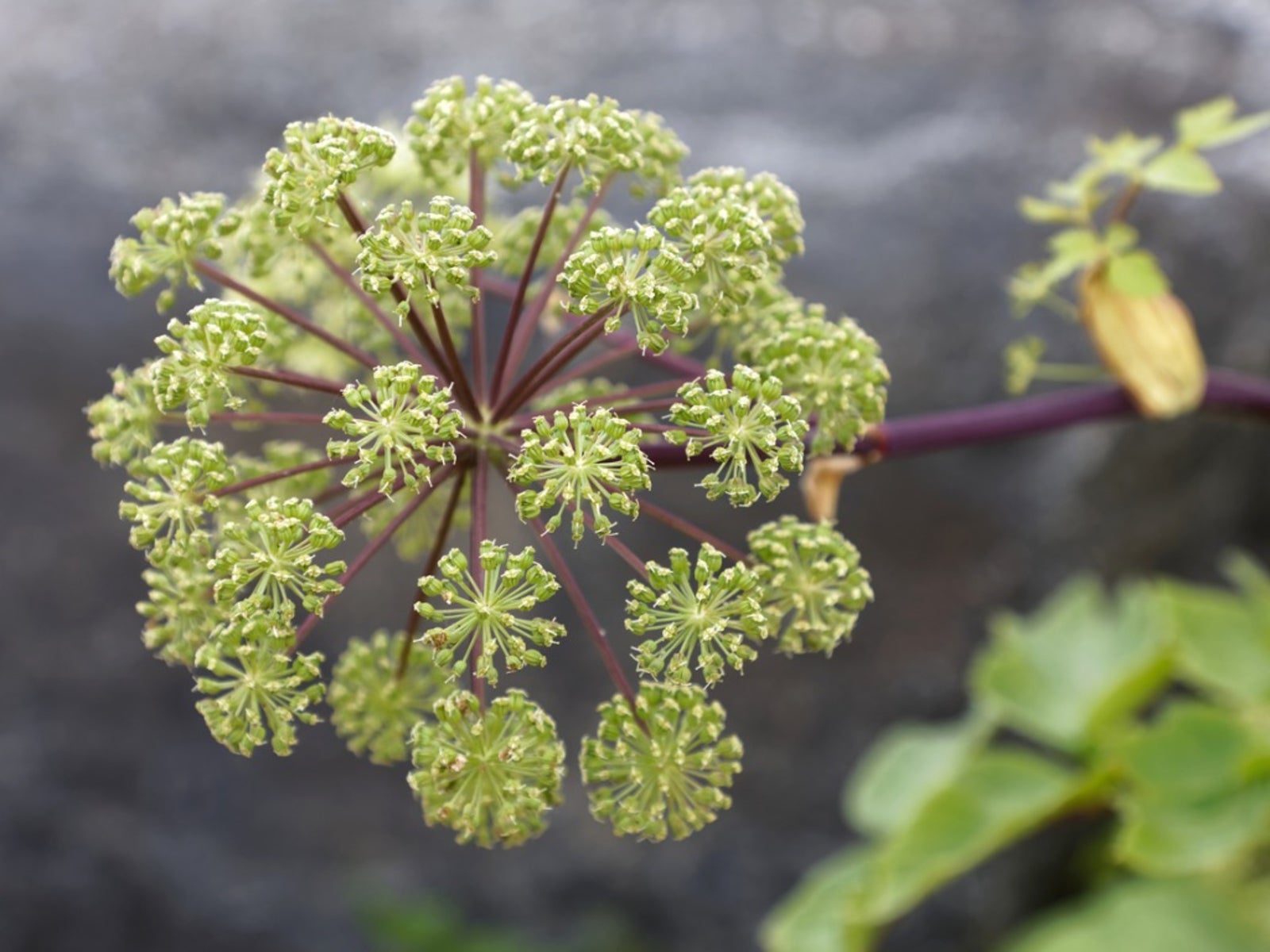Angelica Herb: How To Grow Angelica


Next time you have a martini, savor the flavor and remind yourself it comes from the Angelica root.
Angelica herb is a European plant that has been a flavoring agent in many popular types of liquor, including gin and vermouth.
The Angelica plant has a long history of use as a seasoning, medicinal, and tea. Although not commonly cultivated, growing Angelica will increase the variety and interest of flavors in your herb garden.
Angelica Herb
Angelica plant (Angelica archangelica) is closely related to carrots and a member of the parsley family. The leaves of the plant are simple and uninteresting but may be dried and used in teas or as a seasoning.
The umbrella-like flowers are particularly showy but only occur every two years and, after bloom the plant often dies. The umbels are white and each spoke of the flower bears a dangling seed after the blooms are spent.
Angelica herb has a pungent musky scent and sweet flavor that is recognizable in some of your favorite spirits. The root, leaves, and seeds are all useful.
Angelica is a simple rosette in its first year with a small stalk that may grow 1 to 3 feet (31-91 cm.) tall. In the second year, the plant abandons the rosette form and grows larger, three-sectioned leaves and a 4 to 6-foot (1-2 m.) stalk.
Sign up for the Gardening Know How newsletter today and receive a free copy of our e-book "How to Grow Delicious Tomatoes".
The often-used root is a thick fleshy piece of vegetation that reminds one of a huge pale carrot.
Provide Angelica with plenty of room in the garden as it can spread 2 to 4 feet (61 cm. to 1 m.) wide. Angelica is easy to propagate by seeds or division.
How to Plant Angelica
You should plant Angelica annually to ensure a continued supply of the herb. Angelica plant is considered a short-lived perennial or biennial. It flowers after two years and then either dies or may hang on for another year or two. Growing Angelica indoors is optimum in cooler climates. Set the plants out before they get taller than 4 inches (10 cm.), as they grow a long taproot and transplant is difficult if they get larger. Angelica herb can also be started from division of the roots in spring.
Growing Angelica
The herb prefers cool climates and a semi-shady to sunny location. If planted in a zone with hot summers, a dappled shade location will provide protection for the heat sensitive plant. Angelica herb thrives in moist, fertile soils rich in organic matter. For best results, plant Angelica in slightly acidic soil. The plant is not drought tolerant and should not be allowed to dry out. Angelica herb is easy to care for as long as it is in well drained soil with proper light exposure. Keep weeds away from the plant and maintain moderately moist soil. Water the plant from the base to prevent fungal diseases. Cut the stalk at the end of the first year to promote flowering in the second. Watch for aphids, leaf miners, and spider mites. Control the pests with blasts of water or insecticidal soap.

Bonnie Grant is a professional landscaper with a Certification in Urban Gardening. She has been gardening and writing for 15 years. A former professional chef, she has a passion for edible landscaping.